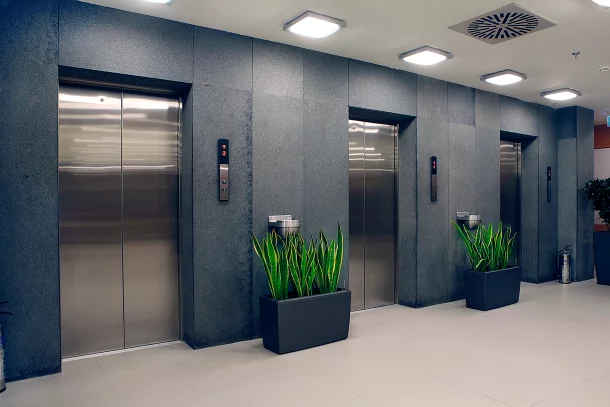Diving Into the World of Lifts: Typical Problems Faced by Numerous Lift Systems
As we browse via the upright transport systems of contemporary structures, elevators stand out as a crucial component of our everyday lives. From hydraulic lifts to grip systems and machine-room-less styles, each lift type comes with its set of usual issues.
Hydraulic Elevators
Hydraulic elevators, often liked for low-rise structures, use fluid stress to regulate the movement of the elevator automobile (lift repair companies). This system includes a hydraulic pump pressing oil into a cylinder, triggering the elevator to relocate in the preferred instructions. While hydraulic lifts are known for their smooth and peaceful operation, they do include their own collection of usual concerns
One prevalent problem with hydraulic lifts is oil leak. Furthermore, issues with the control system, such as damaged shutoffs or a malfunctioning pump, can create interruptions in the lift's movement.
Routine maintenance and punctual repair services are vital to make certain the smooth functioning of hydraulic lifts. By addressing these usual problems proactively, building proprietors can reduce downtime and ensure the security and efficiency of their upright transportation system.
Grip Elevators
When considering upright transportation systems in buildings, one more typical type in addition to hydraulic lifts is the grip elevator. Traction elevators operate making use of a system of ropes and weights that relocate the lift auto by grasping onto the hoist ropes. This mechanism permits smoother and faster upright transport contrasted to hydraulic systems.
Among the usual issues faced by grip elevators is rope wear. The continuous movement of the ropes within the traction system can bring about tear and wear with time, possibly triggering the lift to malfunction or come to be risky for usage. Regular examinations and maintenance of the ropes are important to make sure the lift's proper functioning and safety and security.
Another problem that grip elevators might run into is associated with the control system. Problems with the control system can cause concerns such as unpredictable motion, hold-ups in feedback times, or even total closures. Normal screening and upkeep of the control system are vital to stop such concerns and make sure the elevator's dependability.
Machine-Room-Less (MRL) Lifts

Among the key components of MRL lifts is the small gearless traction equipment that is mounted within the hoistway. This device successfully drives the lift cars and truck without the need for cumbersome equipment discovered in click over here conventional grip elevators. In addition, MRL elevators commonly utilize a weight system to balance the auto, further boosting their energy performance.
Regardless of their advantages, MRL elevators may face challenges connected to upkeep and repair due to the restricted area for tools installation. Availability for servicing elements within the shaft can be restricted, needing specialized training for professionals. Proper upkeep schedules view publisher site and regular assessments are essential to make certain the continued smooth operation of MRL elevators.
Overloading and Weight Limit Issues
Straining and weight limitation problems are critical problems in lift procedures. Elevator makers style lifts with details weight abilities to make sure passenger security and equipment long life.
When elevators are overloaded, it places excessive pressure on the electric motor, cable televisions, and various other elements, potentially creating breakdowns or malfunctions. Safety and security mechanisms such as sensing units and overload sensors remain in place to protect against elevators from relocating if they discover excess weight. Additionally, exceeding weight restrictions can cause increased power consumption and deterioration on the lift system.
To alleviate overloading concerns, developing supervisors ought to plainly display weight limitations in lifts and inform owners on the value of sticking to these restrictions - lift repair companies. Routine upkeep checks by qualified professionals can also assist ensure that elevators are operating within secure weight parameters. By attending to overloading and weight Visit This Link restriction issues proactively, building proprietors can boost elevator safety and security and efficiency
Electrical System Failings
Going beyond weight limits in elevators can not only cause mechanical concerns but also potentially add to electric system failings within the lift facilities. Electric system failings are a vital worry in elevator procedure, as they can create unanticipated closures, malfunctions, or perhaps safety and security threats. One typical electric problem is the getting too hot of parts as a result of too much existing flow caused by overwhelming the lift past its capability. This can cause harm to the control, electric motor, or electrical wiring systems, leading to expensive repairs and downtime.
In addition, power rises or changes in the electrical supply can likewise interrupt the elevator's operation, impacting its performance and security. These electrical disruptions can harm sensitive lift elements such as control panels, circuit boards, or sensing units, leading to system failures. Routine maintenance and evaluations are vital to recognize and deal with prospective electrical concerns quickly, ensuring the secure and effective procedure of elevator systems. By sticking to weight limits and performing routine electric system checks, building proprietors can reduce the risk of electrical failings in elevators.
Verdict

Hydraulic lifts, frequently favored for low-rise buildings, use fluid pressure to manage the motion of the elevator auto.When thinking about upright transportation systems in structures, another typical kind apart from hydraulic elevators is the traction lift. Grip elevators run making use of a system of ropes and weights that relocate the lift auto by grasping onto the hoist ropes. Unlike typical elevators that require a different device space to house the tools, MRL elevators incorporate many of the parts within the shaft, eliminating the requirement for a dedicated device area.In conclusion, elevators deal with usual issues such as hydraulic malfunctions, grip system failings, and electrical system problems.